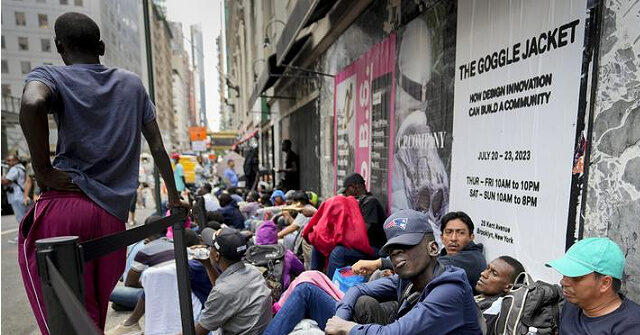New York City and Chicago are facing growing political pressure over their allocation of tax dollars to undocumented immigrants while curtailing benefits for their own citizens. To appease critics, both cities are now presenting policies that appear to take a tougher stance on undocumented immigrants. However, upon closer examination, these policies reveal themselves as little more than political posturing.
In Chicago, Mayor Brandon Johnson has been prominently featured in the media, announcing plans to “evict” undocumented immigrants who have overstayed their welcome in city-sponsored shelters. Similarly, New York’s Mayor Eric Adams has been vocal about revisiting the city’s lenient “right to shelter” regulations, aiming to exclude certain undocumented immigrants from accessing these services.
These purported shifts in policy may seem like significant departures from the cities’ previous welcoming stance toward undocumented immigrants. However, a deeper analysis reveals that these moves lack substance.
New York City and Chicago Respond to Criticism on Immigrant Spending: A Closer Look at Tougher Policies (Credits: The New York Times)
Mayor Adams, for instance, recently asserted that the right to shelter was never intended for undocumented immigrants and proposed a new policy to evict them after 30 days in city shelters. While this may sound decisive, the reality is more nuanced. The new policy includes various exemptions, such as families with children, and does little to address the broader issue of homelessness among undocumented immigrants.
Similarly, Mayor Johnson’s efforts to enforce short-stay orders in Chicago shelters are being touted as a crackdown on undocumented immigrants. Yet, the policy’s impact is limited, with many migrants excluded from eviction, particularly those with families. Moreover, the ease with which migrants can reapply for shelter undermines the effectiveness of the policy.
In practice, these policies amount to little more than symbolic gestures. They fail to address the underlying challenges posed by undocumented immigration and homelessness. Moreover, they risk exacerbating the problem by pushing vulnerable populations onto the streets without providing meaningful solutions.
Meanwhile, both cities are grappling with public health crises, including a measles outbreak in Chicago migrant shelters. The situation has become so severe that the Centers for Disease Control and Prevention (CDC) has intervened to monitor and manage the outbreak.
While New York City and Chicago may attempt to present themselves as toughening their stance on undocumented immigration, the reality is far more complex. These policies fall short of meaningful action and risk further marginalizing vulnerable populations.
